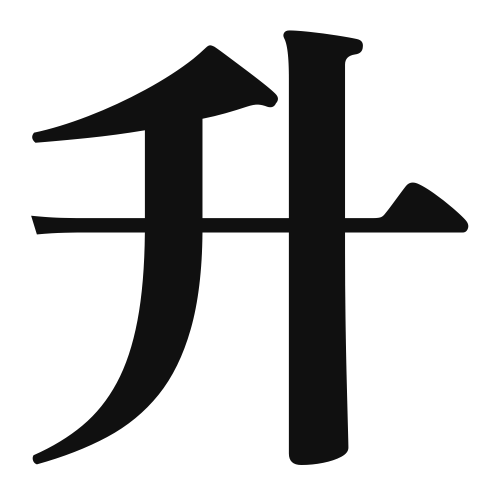1. Overview of Meaning
The kanji “升” (pronounced “masu”) primarily means “to rise” or “to ascend.” It is often associated with elevation, growth, and improvement in various contexts.
2. Formation and Radical
Formation of the Kanji: The kanji “升” is a phonetic-ideographic character (形声文字). It combines the meaning of elevation with a phonetic component that suggests its pronunciation.
Radical: The radical for “升” is “十” (ten), which is found at the top of the character, symbolizing completeness or a higher level.
3. Examples of Usage
Common Words and Phrases:
- 昇進 (しょうしん, shoushin) – promotion
- 上昇 (じょうしょう, joushou) – rise, increase
Example Sentences in Daily Conversation:
- 彼は昇進したので、みんなでお祝いをしましょう。 (かれはしょうしんしたので、みんなでおいわいをしましょう。) – Since he got promoted, let’s celebrate together.
- 最近、株価が上昇しています。 (さいきん、かぶかがじょうしょうしています。) – Recently, stock prices have been rising.
4. Synonyms and Antonyms
Similar Kanji:
- 昇 (しょう, shou) – to rise, often used in contexts of elevation.
- 増 (ぞう, zou) – to increase, which focuses more on quantity rather than elevation.
Antonyms:
- 降 (こう, kou) – to descend, which is the opposite of rising.
5. Cultural and Historical Background
Relation to Japanese Culture: The concept of “升” is significant in Japanese culture, often symbolizing progress and success. It is used in various traditional ceremonies and practices.
Proverbs and Idioms:
- 出世魚 (しゅっせうお, shusseuo) – a fish that rises in status, often used to describe someone who achieves success.
